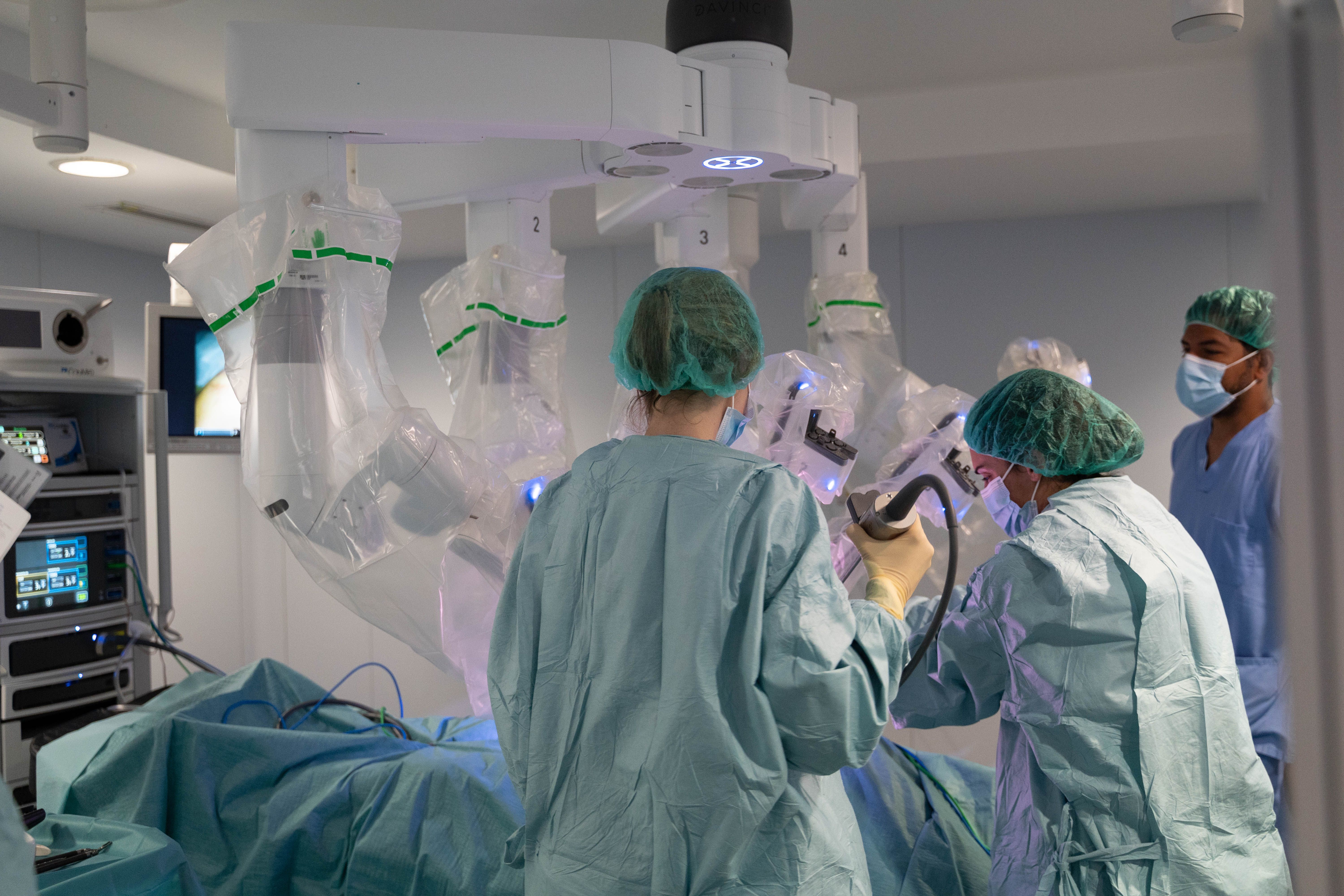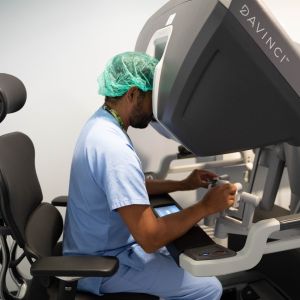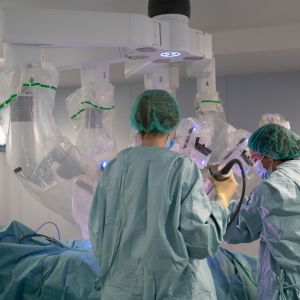
Robotic surgery allows abdominal hernia patients to return to activity within 48 hours of discharge
- Robotic surgery represents a before and after in the surgical approach to this condition, reducing hospital stay by 4 days and enabling a return to daily activities within 48-72 hours after discharge.
- Abdominal wall hernia is a common condition that can affect both children and adults.
- It occurs when part of an organ or some tissue protrudes through the weakened abdominal wall.
Robotic surgery has revolutionized the way many interventions are performed, both complex and common ones. Less complications, a much shorter recovery time, increased precision for surgeons, and a quicker return to daily activities for patients are the main advantages offered by robot-assisted surgery, making any intervention more accessible and straightforward.
In the case of abdominal wall surgery, robotics have paved the way, "allowing the integration of the benefits of dissection in open surgery with those of minimally invasive surgery," as stated by Dr. Leopoldo Salvatierra, a surgeon at Grupo Policlínica. In other words, the same results as open surgery are achieved, but with minimal incisions. With this technique, patients reduce their hospital stay from the usual 5-8 days in open surgeries to between one and four days, and they can resume their daily activities within 48-72 hours after discharge, with some restrictions for heavy lifting or strenuous efforts.
Recently, Grupo Policlínica performed a series of abdominal wall operations using a highly innovative approach assisted by the Da Vinci robot, allowing the minimally invasive intervention of eight patients with anterior abdominal wall hernias. Previously, a complete opening of the abdomen was required; in this case, small incisions of 1 to 4 cm were sufficient, through which significant resections were made, hernias were repaired, and the abdominal wall was reconstructed. This not only allowed for a shorter hospital stay with less pain and discomfort but also resulted in less visible scars.
"Robot-assisted surgery allows us to work with much greater precision in very confined spaces, increasing the possibilities of the intervention itself," says Dr. Salvatierra. "Furthermore, it allows us to reconstruct the layers of the abdominal wall effectively and place larger meshes that help restore the muscular function prior to the onset of the hernia. And all of this with much better postoperative conditions" he adds.
This cutting-edge approach, which also allows safer operations for obese patients, is the technique of choice for surgeons ahead of laparoscopy, provided the patient meets the necessary conditions. "It's still not the most common because not all centers have a Da Vinci robot, but certainly, when the situation allows, surgeons opt for these types of interventions, significantly improving patients' quality of life in the postoperative period and providing results that are equally or more effective" indicates the specialist.
A common but potentially serious condition
A hernia occurs when part of an organ contained in the abdomen or some tissue protrudes through the abdominal muscle due to its weakened or ruptured state. The patient feels a soft lump that can be pushed back in but will reappear with any abdominal effort, such as a simple cough, or spontaneously. Over time, the lump always stays outside, with no possibility of reintroducing the tissue.
Hernias can cause pain and discomfort and, furthermore, lead to a potentially serious situation if the tissue becomes strangulated and does not receive blood supply, as this can result in gangrene requiring immediate medical attention, as it could be fatal.
In general, patients may have no symptoms, but when the hernia causes pain and grows, surgical intervention is recommended. In fact, abdominal wall hernia surgery is the most frequent operation, accounting for up to 50% of interventions performed in a general surgery department.
Any activity or problem that excessively increases pressure on the tissue or abdominal muscles, weakening or tearing them, can lead to the development of an abdominal hernia. Examples include constipation, chronic cough, pathologies requiring straining to urinate, overweight, physical exertion such as heavy lifting, cystic fibrosis, and abdominal hernias can also be congenital or secondary to another operation in the area.



